Which stately homes have the best gardens?
Audley End House
Strolling around the gardens of Audley End House today you are enjoying the work of two of the most famous and influential designers of the 18th century. Lancelot ‘Capability’ Brown swept away the remnants of a declining formal garden to create extensive views, a serpentine lake and more natural planting. The elegant garden buildings, such as the bridge over the River Cam, are the work of Robert Adam, the neoclassical designer who also designed a suite of rooms in the mansion. Don’t miss the beautifully restored parterre and the walled kitchen garden run entirely on organic principles. Other highlights of Audley End House’s grounds including the Elysian Garden and Tea House Bridge; the Classical Temple of Concord, where you can view the house in its setting; the memorial to Second World War Polish ‘underground’ resistance soldiers; and of course, the restored formal garden itself.
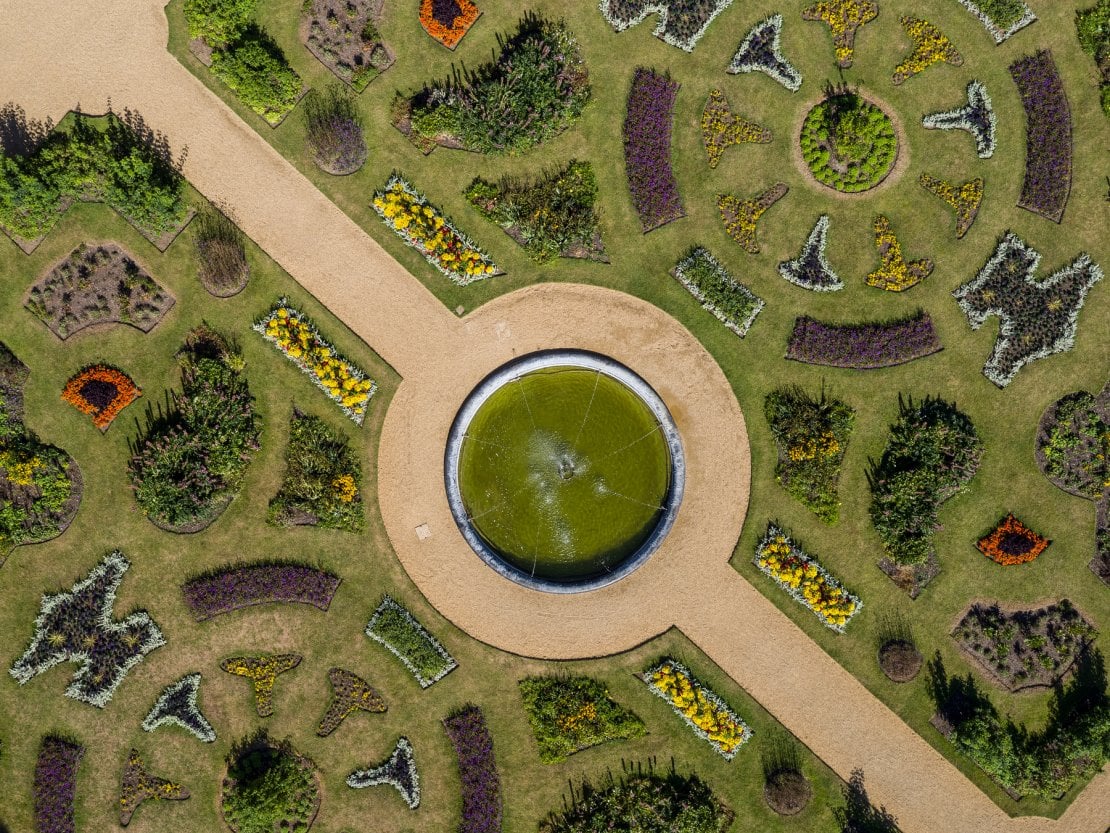
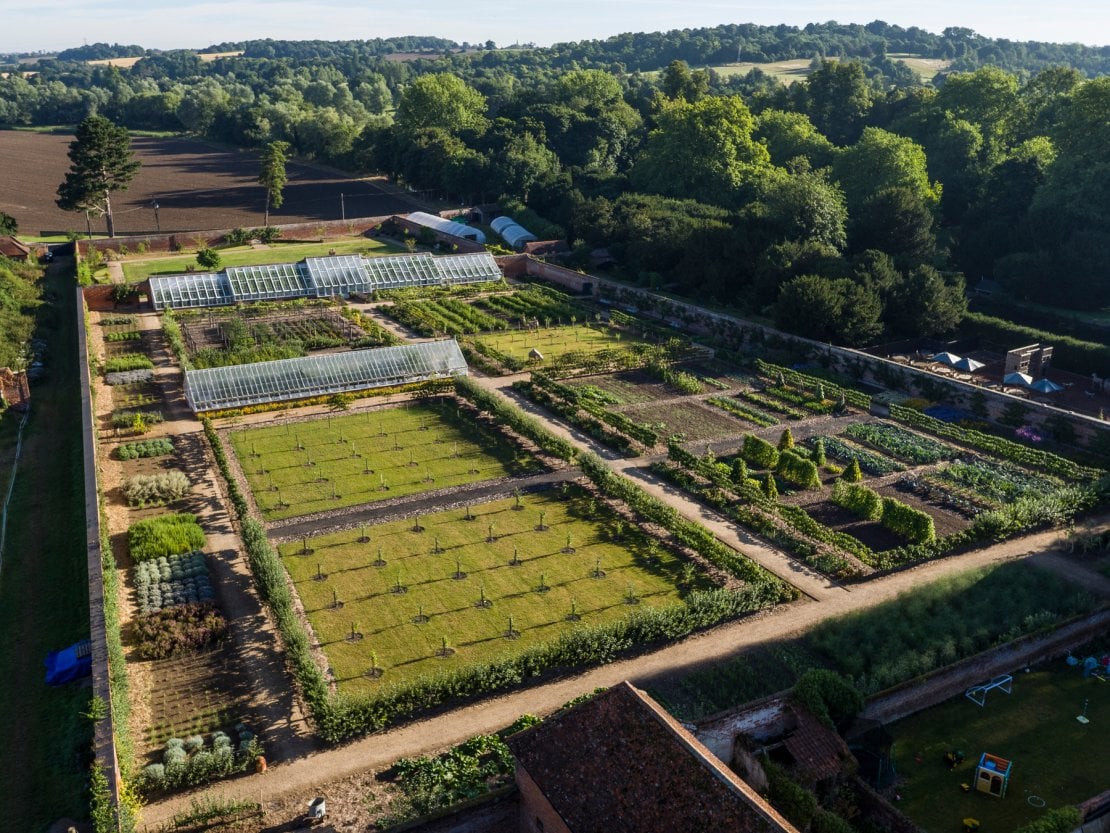
Audley End's Impressive kitchen gardens and flowerbeds ©English Heritage
https://www.english-heritage.org.uk/visit/places/audley-end-house-and-gardens/
Wrest Park
The gardens at Wrest Park are a dramatic showcase of three centuries of landscape design, with 90 acres of woodland, serpentine waterways, colourful parterres, classical statues and elegant buildings. In Spring snowdrops, daffodils and primroses feature heavily in the extensive woodland areas around the vast network of paths. The formal gardens around the house provide a wonderful display of colour in spring. Seasonal bedding schemes include a mixture of tulips, hyacinths, violas, forget-me-not, polyanthus and crown imperial fritillaries. The restored Italian Garden and French Parterre are a riot of colour and stunning to look at with their design changing from year to year and evolving from early spring through to late summer. Look out for the magnificently trained wisterias in the Italian Garden and Pear Orchard, which flower in early summer.
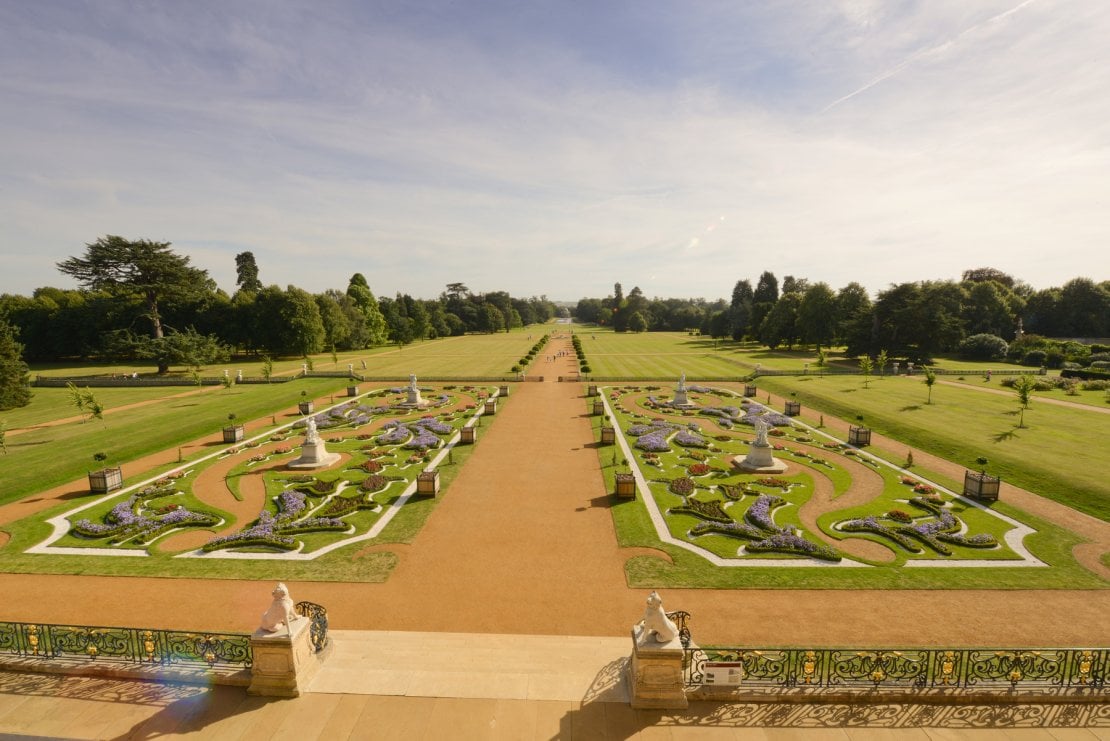
Wrest Park's Beautiful Formal Gardens ©English Heritage
If you visit and explore the Walled Garden in Spring the blossom on the fruit trees and the fresh young foliage of globe artichokes, asparagus, rhubarb, and herbs such as rosemary and bronze fennel provide interest and colour. In summer, fruit forms on apple and pear trees, and summer-fruiting gooseberries and blackcurrants ripen, along with rhubarb crops, globe artichokes and cardoons. Newly planted espaliers and fan-trained fruit in the Walled Garden include cherries, apricots, plums and peaches - watch them grow and eventually produce fruit that would have been grown by the Head Gardeners of the past at Wrest. In the Pear Orchard, the grass is left to grow naturally until July and native daffodils and Gladiolus communis subsp. byzantinus mingle with other wildflowers, among them the lovely cowslip, which has colonised well at Wrest.
In the subtropical Conservatory, there is always something interesting to see at all times of the year. A summer highlight is the dramatic climbing passion flower (Passiflora) and a 2 metre-tall dahlia. Summer-flowering bulbs and the delicate but beautiful 'Unique' pelargoniums are all surrounded by the luxuriant and architectural foliage of banana plants, cannas and aeoniums. Later in the summer, look out for ginger lilies (Hedychium) for their unusual flowers and strong scent.
The Rose Garden has now been restored to its original design and contains a wide range of modern hybrid roses which bloom almost continuously from early summer to late autumn. It is a treat for all the senses with new varieties bred to look and smell like traditional old English roses, but far less susceptible to disease. Shrub roses and specimen trees grow in the Rose Garden's border - look out for the tiered wedding cake tree opposite the mermaid statue.
https://www.english-heritage.org.uk/visit/places/wrest-park
Brodsworth
Restored after years of neglect, the 15 acres of pleasure grounds at Brodsworth are now some of the most remarkable Victorian gardens in the country. With tunnels, bridges and paths creating a series of visual surprises, and drifts of wildflowers to delight any visitor. The Flower Garden is bedded out each summer in the high Victorian style, with a range of plants used by Victorian head gardeners including cannas and gingers for dot planting with plants such as Salvia, Gazania, Ageratum and Verbena forming the main parts of the design. The plants are chosen so that their eventual height creates a tiered effect, something very popular in the late 19th century when vivid and intricate carpet bedding was the height of fashion. The fountain runs on the hour, every hour for 15 minutes to add to the spectacle of the bedding scheme.
As you move down into the Pleasure Grounds, which are set in an 18th-century quarry, the scent of the Rose Garden greets you even before you can see it. Its 45-metre long pergola draped with scented climbers forms the central axis of the garden with box-edged rose beds on either side containing over 100 varieties of historic rose. These make June a wonderful month in this corner of the garden.
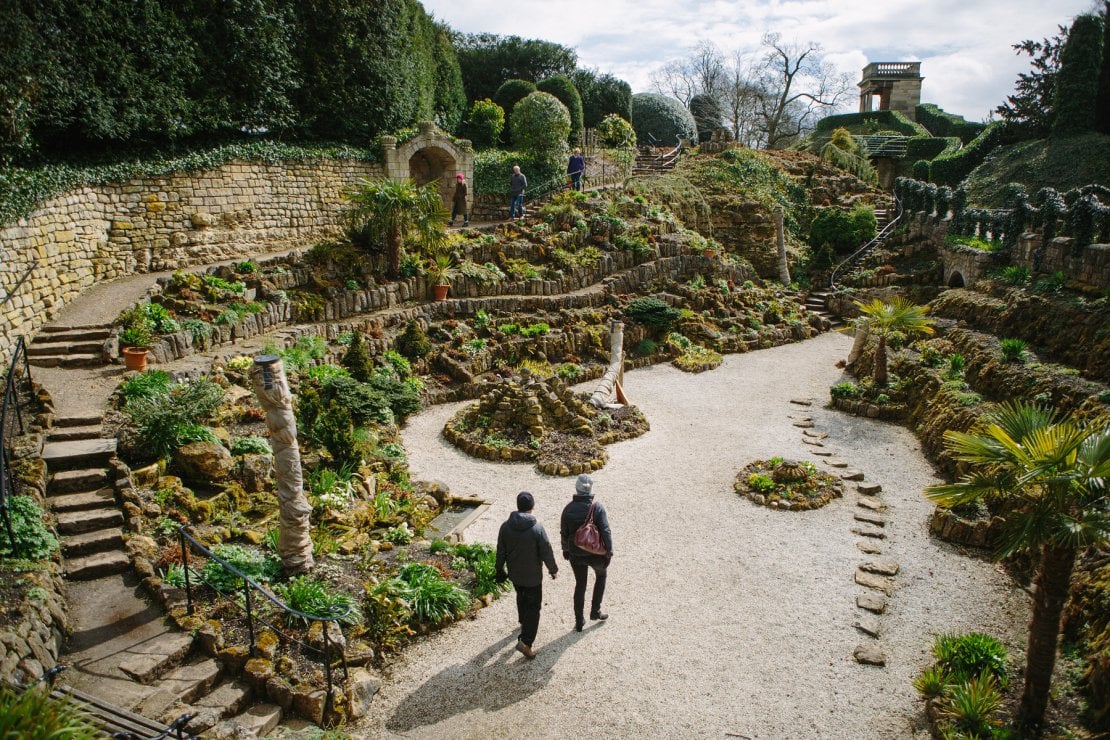
Brodsworth Hall Gardens ©English Heritage
The lawns at Brodsworth lived through several decades without close mowing to become a valuable rare remnant of magnesium limestone grassland rich in wildflowers. Milkwort, rock rose, cowslip, rest-harrow and several native orchids flourish here from late spring through to mid-summer. It is in autumn that the historic influences at Brodsworth truly jump out at you. A fine collection of ornamental trees display their autumn colours and the formal garden frames the hall in beautiful autumn light. A permanent feature of these beautiful gardens is the fine topiary and hedges which take a more prominent role in autumn and winter once the flowers aren't taking centre stage.
https://www.english-heritage.org.uk/visit/places/brodsworth-hall-and-gardens/
Cliveden
Cliveden near Maidenhead is a stunning building, now a luxury hotel, overlooking the river Thames with a fine dining restaurant. Its extensive grounds include steep escarpments, beautiful woodlands and river views and there is even a ferryman's cottage that can be rented for special getaways. The gardens are varied with the formal Parterre and floral displays, ponds and stunning daffodil beds in spring that are a delight to roam around and close to the house and car park for those wanting a shorter walk. The rest of the grounds covering many miles of footpaths are dog friendly and full of wildlife such as deer, rabbits and birds and there is not only a café but a very nice pub called The Feathers (correct at the time of writing) opposite the entrance, and many other pubs, cafes and restaurants in nearby Maidenhead, Bourne End or Taplow.
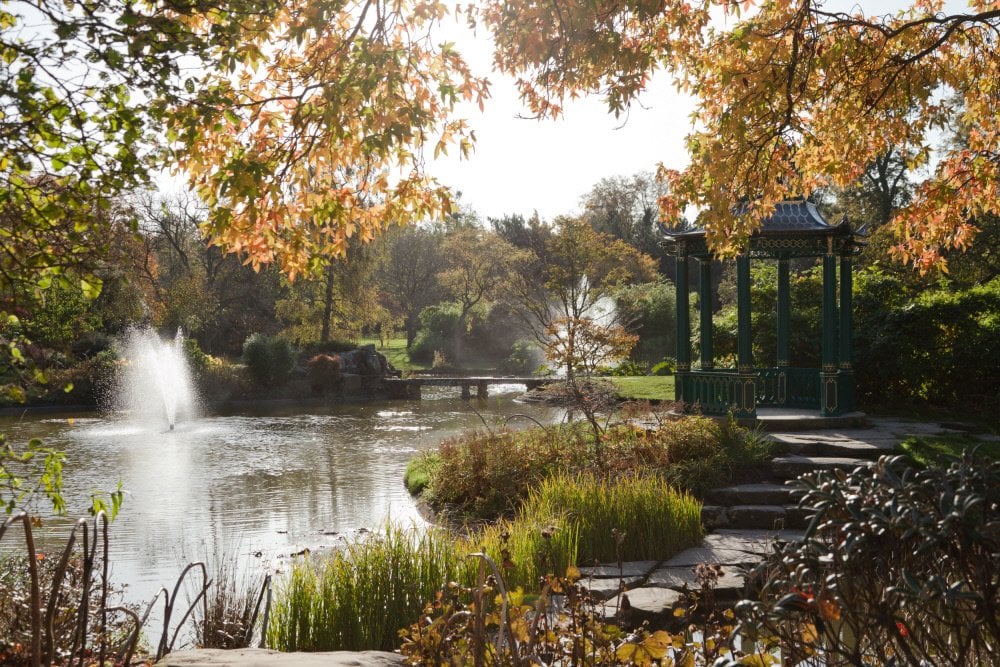
Japanese pagoda in the Water Garden at Cliveden, Buckinghamshire ©National Trust Images/Megan Taylor
https://www.nationaltrust.org.uk/cliveden
Cragside
Cragside was the home of Victorian engineer Lord William Armstrong and his wife Lady Margaret and was the first home in the world to be lit by hydroelectricity using Sir Joseph Swan's newly invented filament lightbulbs. Cragside has such extensive grounds that when we visited we brought our bicycles and cycled all the way around the estate drive (6 miles), short enough for smaller children to manage and even for our dog who happily ran alongside. This allows you to visit the entire estate including lakes, woodlands, a river and hilly countryside with breathtaking views. There are many spots perfect for picnics. Once children are thoroughly worn out and your dog is in need of a sleep, the cafe is a delightful stop for tea and cake. The house is very interesting with Victorian gagetry and decor and so are the formal gardens (dogs are not allowed).
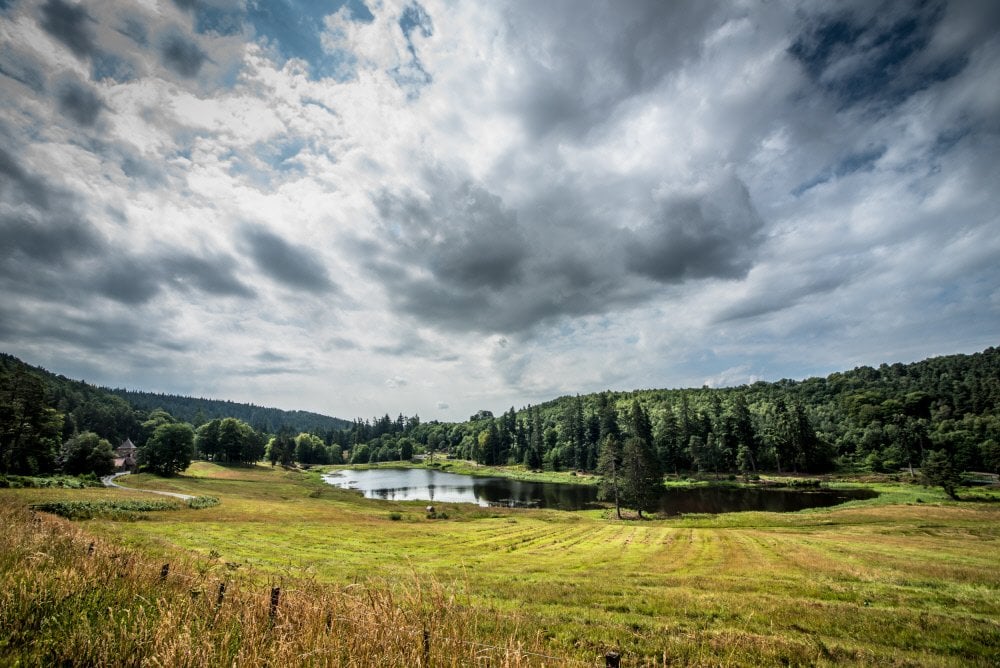
Tumbleton Lake at Cragside, Northumberland ©National Trust Images/John Malley
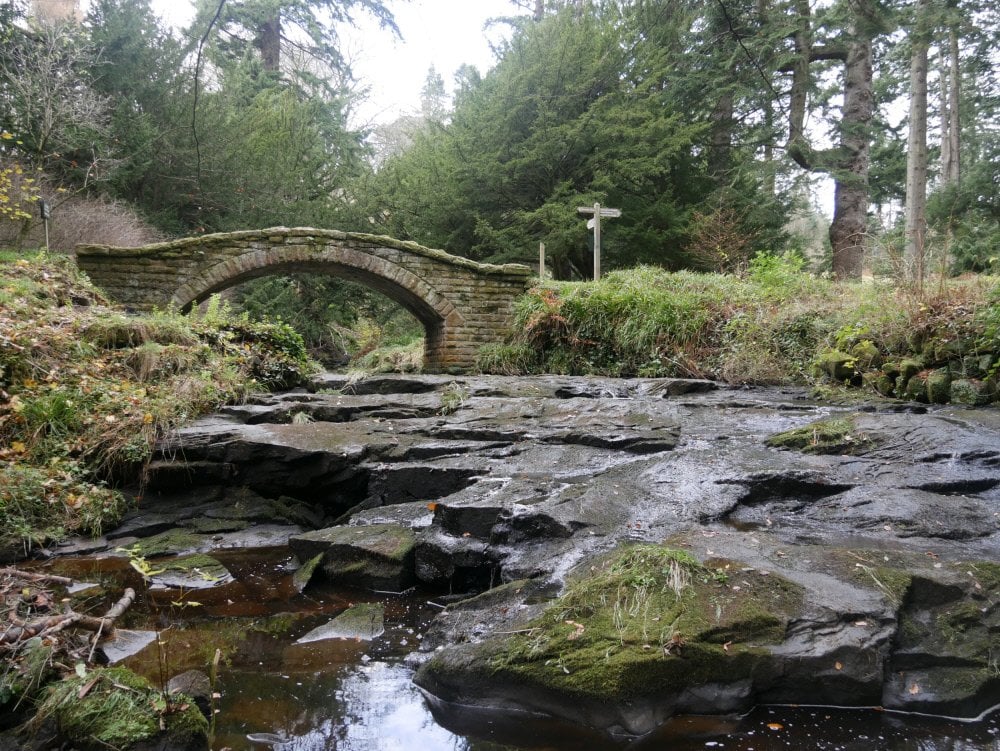
Springtime in the woodland at Cragside, Northumberland ©National Trust Images/Robin Grover
https://www.nationaltrust.org.uk/cragside
Stowe
Stowe remains one of our favourite Sunday outings – dogs are allowed throughout the grounds and the parkland is full of surprises with statues and ornate buildings around every corner. The scale and beauty of Stowe have attracted visitors for hundreds of years with its perfect views, winding paths, lakeside walks and temples. The sheer size and space is wonderful for those who love the outdoors and an entire afternoon can be spent in the grounds followed by afternoon tea in the cafe. Children especially love the Grotto and dogs will find maximum swimming opportunities in the lake.
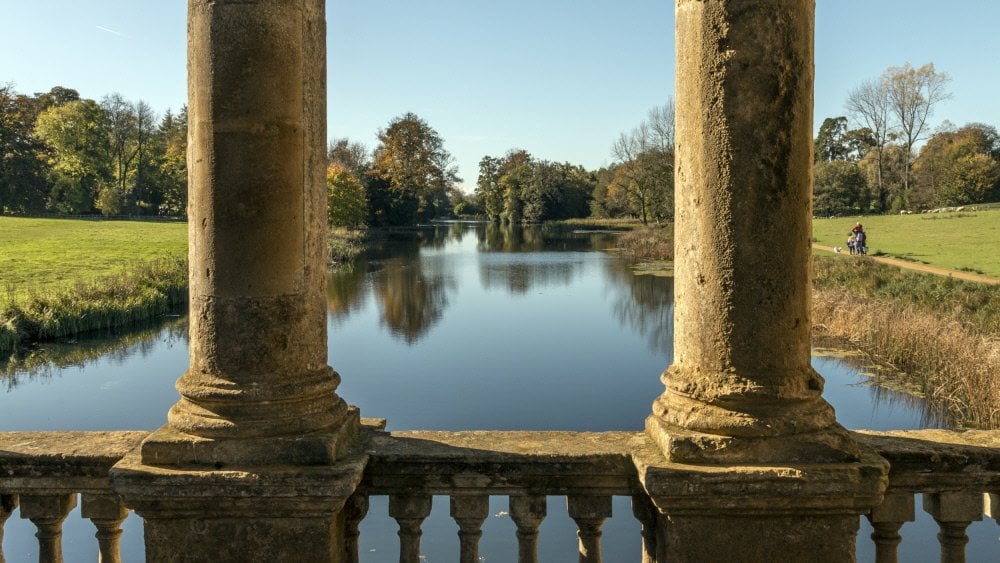
Looking out from the Palladian Bridge in autumn at Stowe, Buckinghamshire ©National Trust Images/Hugh Mothersole
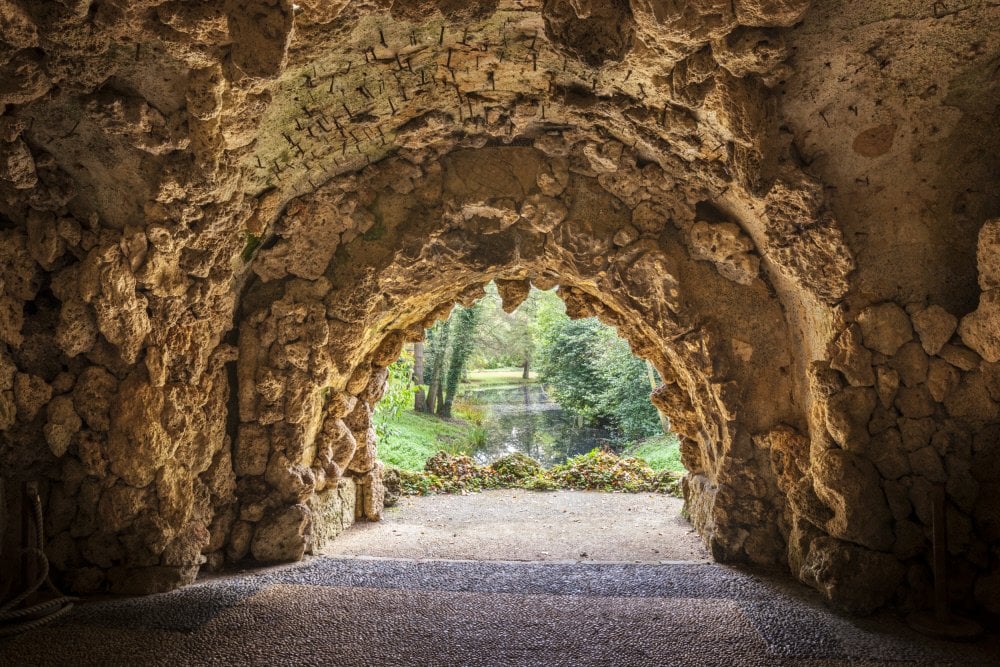
The Grotto at Stowe, Buckinghamshire.©National Trust Images/Andrew Butler
https://www.nationaltrust.org.uk/stowe
Castle Howard
With 1,000 acres of parkland to explore, Castle Howard is a haven of peace and tranquillity, offering breathtaking views at every turn taking in the countryside of the Howardian Hills, a designated Area of Outstanding Natural Beauty.
The monumental landscape is studded with statues, temples, lakes and fountains with sweeping countryside views. You can stroll along grass terraces and waterside paths, admire seasonal displays and wind your way along woodland trails amongst an impressive botanical collection. In the Walled Garden, there are numerous herbaceous borders with a rich crop of fruit and vegetables in the ornamental potager. In the Rose Garden, colourful blooms and sweet scents fill the air in the summer month. Bird watchers and wildlife lovers
will find a rich variety of animals in the array of garden habitats. Dogs are welcome at Castle Howard.
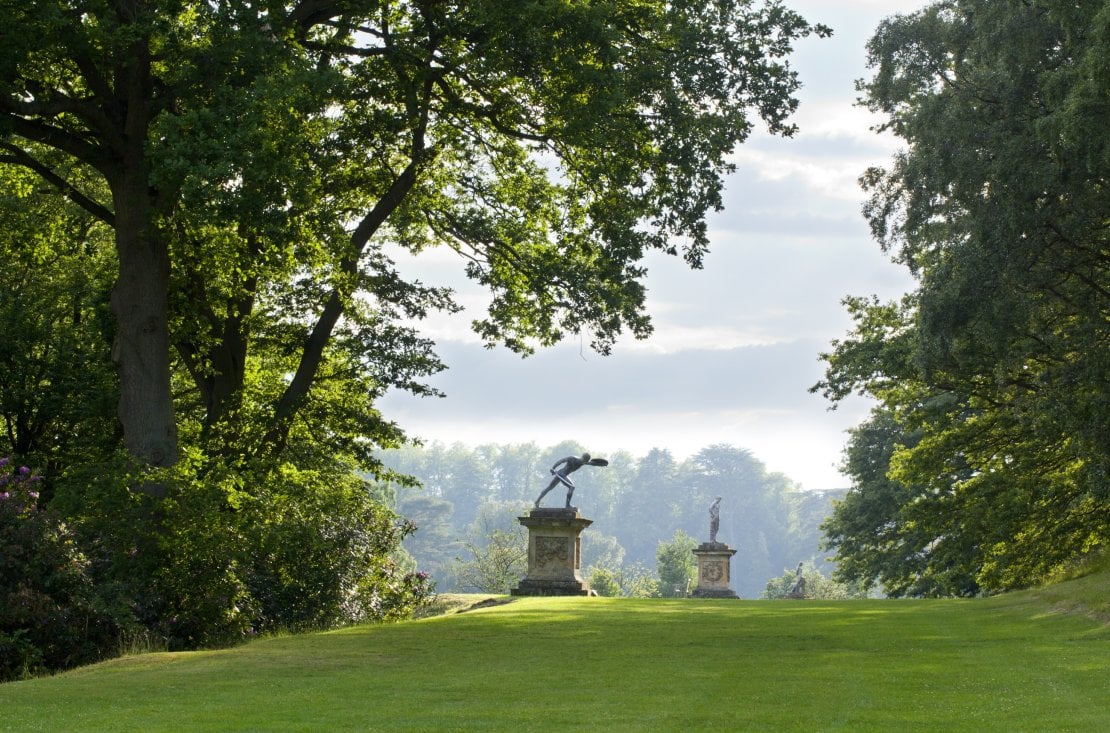
The grounds are so extensive that they offer train rides to the Great Lake to take in the views from their boat which sails in the summer months.
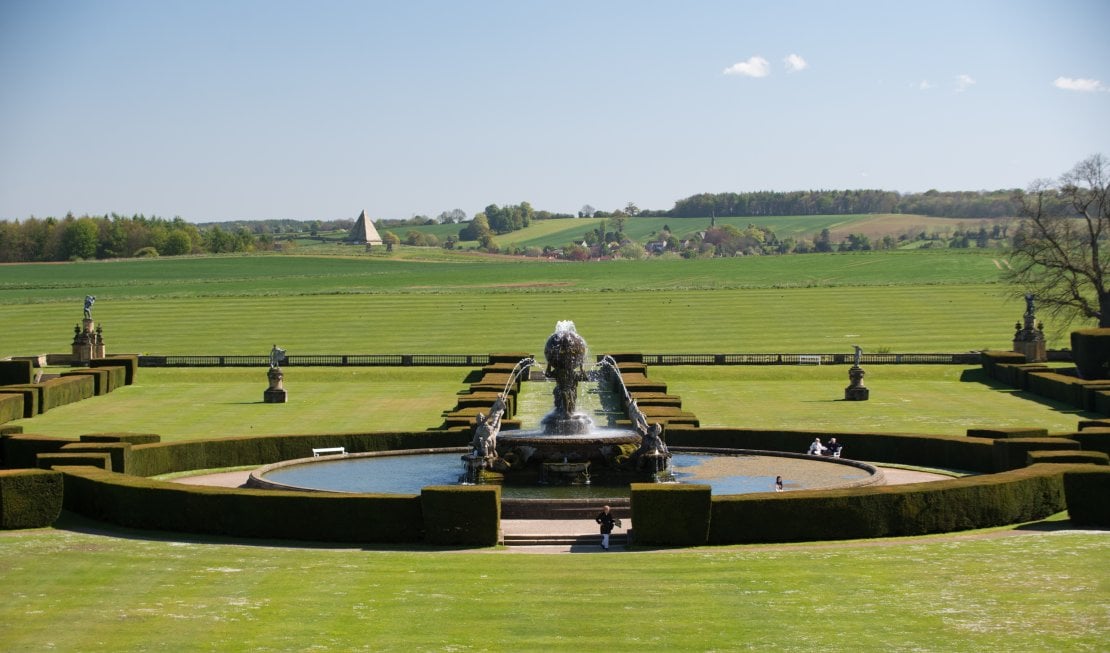
Photos courtesy of Castle Howard
https://www.castlehoward.co.uk/
Arundel Castle
The Castle Gardens at Arundel Castle are cared for by Kew Guild Medal recipient and renowned gardener Martin Duncan. A highlight of the calendar is the Annual Tulip Festival, one of the largest public tulips displays in the UK. Over 60,000 tulips burst into bloom at Arundel every year in mid-April, when the Festival sees the extensive gardens decorated with swathes of the colourful flowers for three weeks.
A record number of over 130 varieties of tulip makes up the display, including the mandarin-scented Ballerina, the striking, deep maroon Queen of the Night and the playfully striped Marilyn. Tulips give way to the Allium Extravaganza, running from mid-May to mid-June when thousands of the pom-pom headed flowers will bloom throughout the extensive grounds.
The Castle Gardens also feature a whimsical stumpery – the home of upturned ancient tree roots – and a new, replica Victorian Glasshouse which allows visitors to get up close to tropical plants including pineapple plants, pawpaw trees, passion fruit plants, miniature banana trees, coffee plants, anthuriums, hibiscuses and even a baobab tree.
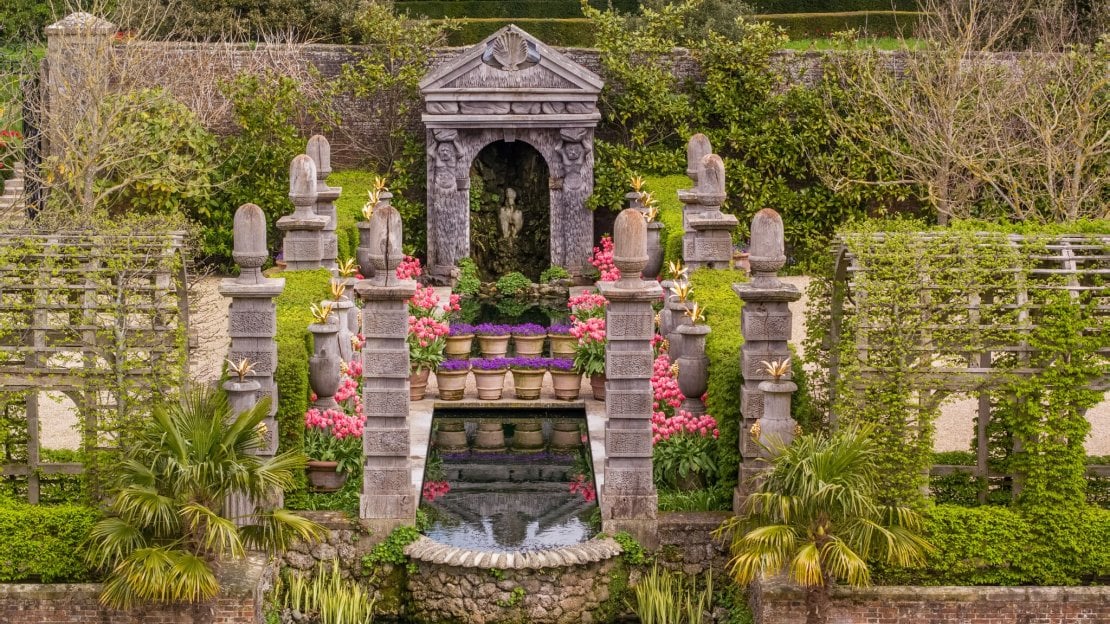
Photo courtesy of Arundel Castle
https://arundelcastle.org/
Waddesdon
Waddesdon’s wonderful grounds are no doubt outshone by the stunning manor house. However, once your eyes demand to take a break from staring at the excessively ornate interior the gardens are a welcome haven. The aviary full of interesting and exotic birds is a personal favourite and entertains both adults and children. Around Christmas time there is usually an atmospheric lighting display. Please note that dogs are not allowed in the grounds and that there is a long walk required from the car park to the manor house.
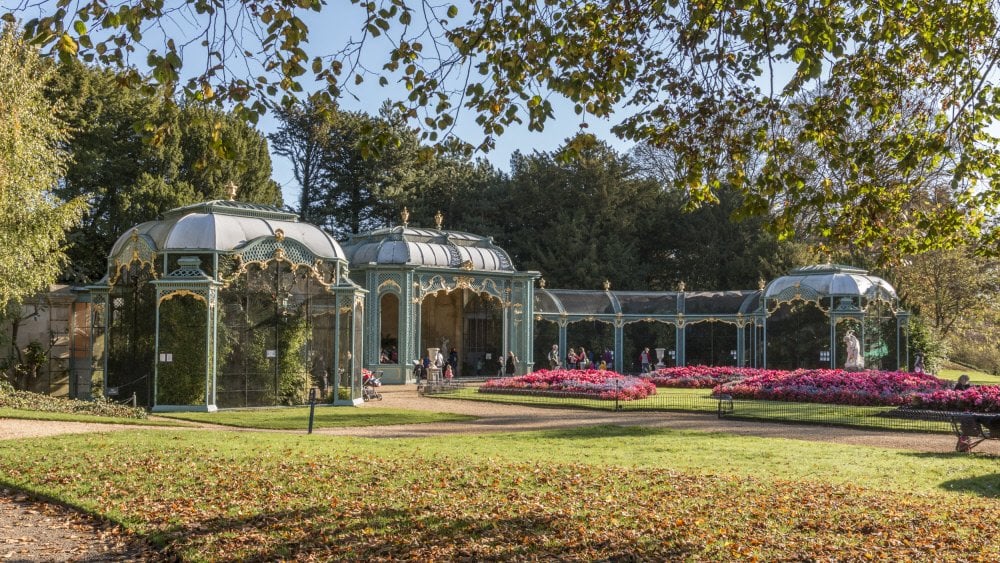
Aviary in the gardens at Waddesdon Manor, Buckinghamshire ©National Trust Images/Hugh Mothersole
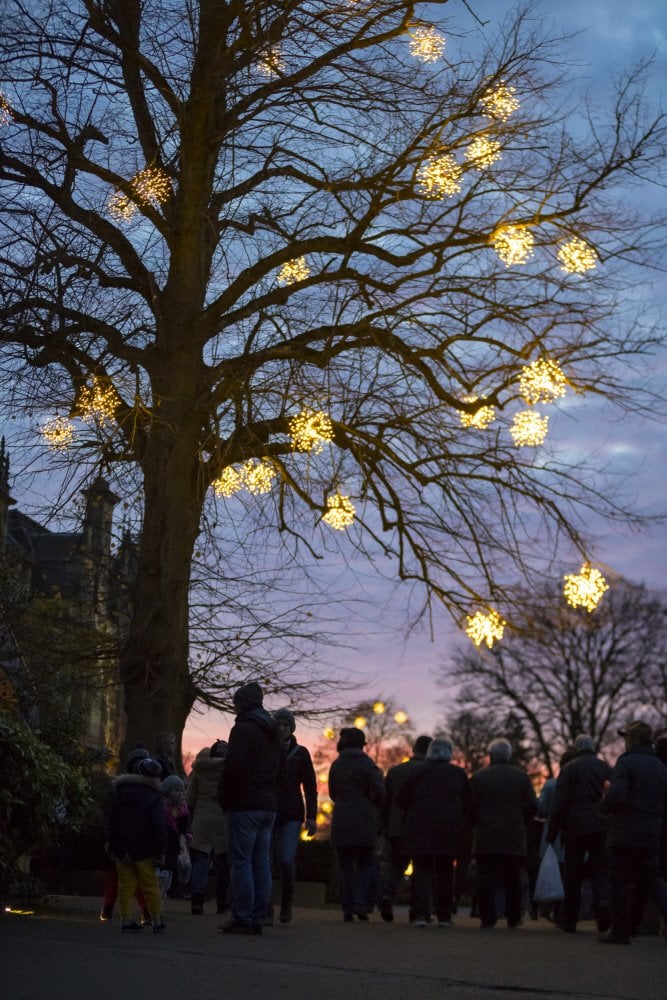
Visitors exploring the Christmas market at Waddesdon Manor, Buckinghamshire ©National Trust Images/Chris Lacey
https://www.nationaltrust.org.uk/waddesdon-manor
Powis Castle
Powis Castle has stunning landscaped grounds featuring Italianate terraces, sculptural yew hedges, statues and beautiful herbaceous borders with lots of walking and views to die for. The garden is world-famous, overhung with clipped yews and with rare and unusual plants. Laid out under the influence of Italian and French styles, it still has many of its original lead statues and a stunning orangery on the terraces. The castle sits high on a rock above the terraces. It was originally built circa 1200 and began life as a medieval fortress but has been remodelled and enhanced over centuries to end up being one of the most impressive castles we have ever visited. The castle is rich in ornate mouldings, paintings, sculpture, furniture and tapestries. If you are holidaying or living in the Powis area, Powis Castle really is a must see. Due to the medieval deer park, no dogs are allowed in the grounds.

Powis Castle and Garden, Powys, Wales ©National Trust Images/Joe Wainwright
https://www.nationaltrust.org.uk/powis-castle-and-garden
Chartwell House
Chartwell House is the former home of Sir Winston Churchill. The hillside gardens are stunning and reflect Churchill's love of the landscape and nature and include the lakes he created, the kitchen garden and a playhouse designed for his youngest daughter. The garden is a feast for the eyes, whatever the season. The present walled rose garden on the north side of the house was designed by Clementine's close friend and cousin Venetia Montagu. Together they created a traditional, formal English rose garden. Divided by paths into four beds, in formal Edwardian style, the striking display is softened by a mass of perennials and shrubs in gentle colours. The rose garden was Clementine's pride and joy and became the part of the garden she loved the most. Winston had proposed to Clementine in the rose garden at Blenheim Palace, and no doubt the rose garden here at Chartwell bought back some fond memories for her.
Using the old diaries of Churchill’s head gardener and surviving invoices of see purchases, the National Trust recreated something like the appearance of the productive kitchen garden as the Churchill family would have known it. In the kitchen garden, you can see the wall that Winston Churchill built with his own hands.
There is plenty to keep you entertained in the house and the rooms remain much as they were when he lived there, with pictures, books and personal mementoes reflecting the career, hobbies and private life of the great man. Churchill was a prolific amateur painter and a large collection of his paintings can be viewed in the studio within Chartwell's grounds. Every winter there is a temporary exhibition to explore Churchill in more detail.
Outside the gardens there is a large area of woodland with looped trails and natural play areas within Chartwell's grounds that lead to public footpaths that go further afield should you so wish. The outside areas are dog-friendly and there is a great cafe.
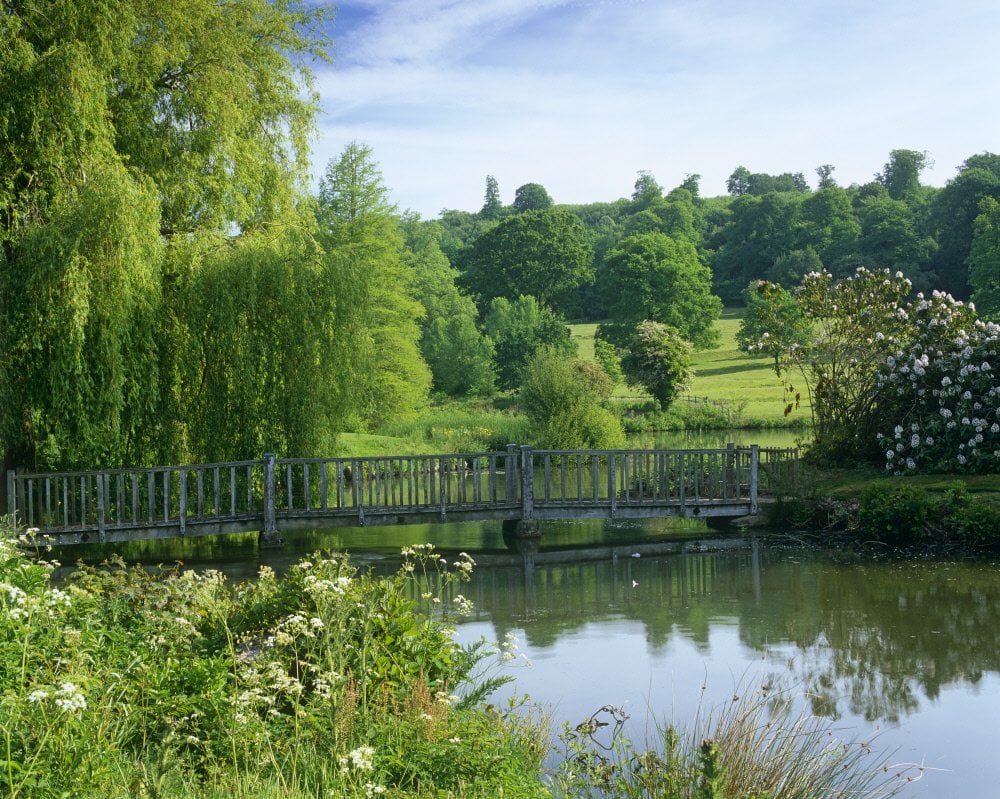
Bridge acress the lake at Chartwell, Kent. ©National Trust Images
https://www.nationaltrust.org.uk/chartwell
Bodnant Garden
Bodnant Garden nestles in the Snowdonian foothills of North Wales. A Grade I-listed horticultural paradise, it is one of the jewels in the crown of the National Trust, admired by visitors the world over. Its 80 hillside acres span formal Italianate terraces, meadows and wooded glades, dramatic dells and water gardens. It is home to a historic collection of plants from around the world, many Champion Trees and five National Plant Collections.

View of the Snowdonia foothills from the terrace at Bodnant Garden, Conwy ©National Trust Images/John Miller
Established in 1874 by scientist, businessman and politician Henry Pochin, he and his family filled the garden with plants collected by global explorers such as Ernest Wilson, George Forrest and Harold Comber. Bodnant is a garden of firsts – home to the grandest Laburnum Arch, to Britain’s earliest magnolias, and to unique rhododendron hybrids which were born and bred here. Cared for by the National Trust since 1949, today it is home to plants as diverse as the Blue Poppy of the Himalayas to the Fire Bush of the Andes, as well as five National Collections (Magnolia, Embothrium, Eucryphia species, Rhododendron forrestii and Rhododendron Bodnant Hybrids) and Wales’ largest collection of UK Champion Trees.
There’s something to enjoy every season; In spring, swathes of daffodils, camellias, magnolias, and rhododendrons; roses, lily ponds, herbaceous beds and buzzing wildflower meadows in summer; a kaleidoscope of rich leaf colour in autumn; and a stunning Winter Garden. You can also visit the beautiful Poem mausoleum where the donor family are laid to rest and step upstairs inside the renovated Georgian Pin Mill and get a bird’s eye view across the famous rose terraces.
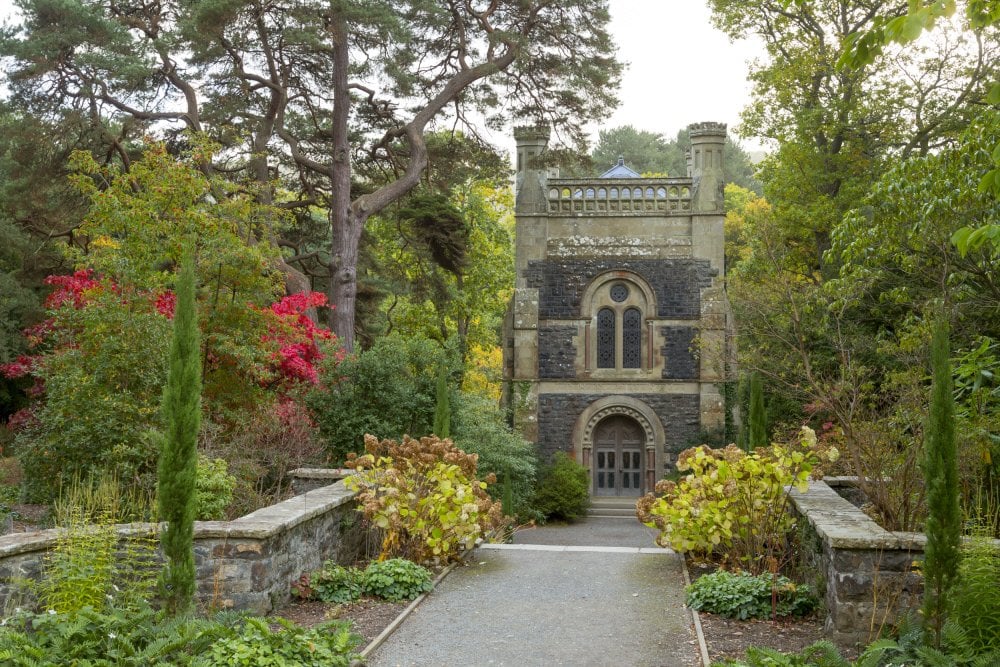
The Poem, the name given to the family mausoleum at Bodnant Garden, Conwy, Wales ©National Trust Images/John Miller
https://www.nationaltrust.org.uk/bodnant-garden
Plas Mewydd
For Plas Mewydd, not having visited ourselves, we asked the Head Gardener Bill Warrell for some garden highlights and this is what he said.
- Landscape design influenced by Repton (Red Book produced in 1799)
- Garden and House located on banks of Menai Strait, affording wonderful views over the water and out to Snowden and other mountains in Snowdonia
- Italianate Terraces with recently renovated Hot and Cool Borders
- Rhododendron Garden with a wide variety of species of rhododendrons and beautiful early magnolias
- Australasian Arboretum containing many eucalypts, as well as other unusual trees and shrubs from the southern hemisphere
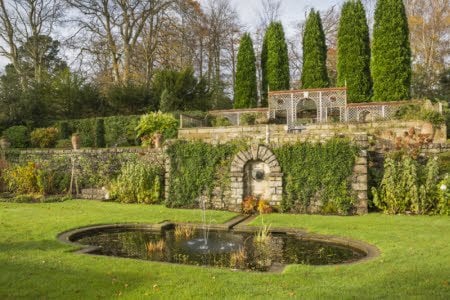
The lily pool on the Italianate terrace at Plas Newydd, Anglesey, North Wales ©National Trust Images/James Dobson
https://www.nationaltrust.org.uk/plas-newydd-country-house-and-gardens
Ascott House
Ascott House is a small stately home near Leighton Buzzard still inhabited by a Rothschild and decorated and furnished beautifully. The fact that it is inhabited makes it very interesting in itself as a point of comparison to the likes of Waddesdon and it's overtly opulent nature. The garden is not open to dogs however it is one much enjoyed by adults and children alike and there are plenty of good dog walks nearby. The garden consists of a vast area of grass and assorted specimen trees including oaks, cedars and horse chestnuts. There is an opulent fountain featuring Venus on a horse along with a lily pond, an interesting sundial and a wealth of excellently maintained topiary, hedging, colourful bedding plants and statues. Views from the garden include the famous Chiltern Hills with horses grazing on Rothschild land in the foreground.

The Venus Garden at Ascott, Buckinghamshire ©National Trust Images/Andrew Butler
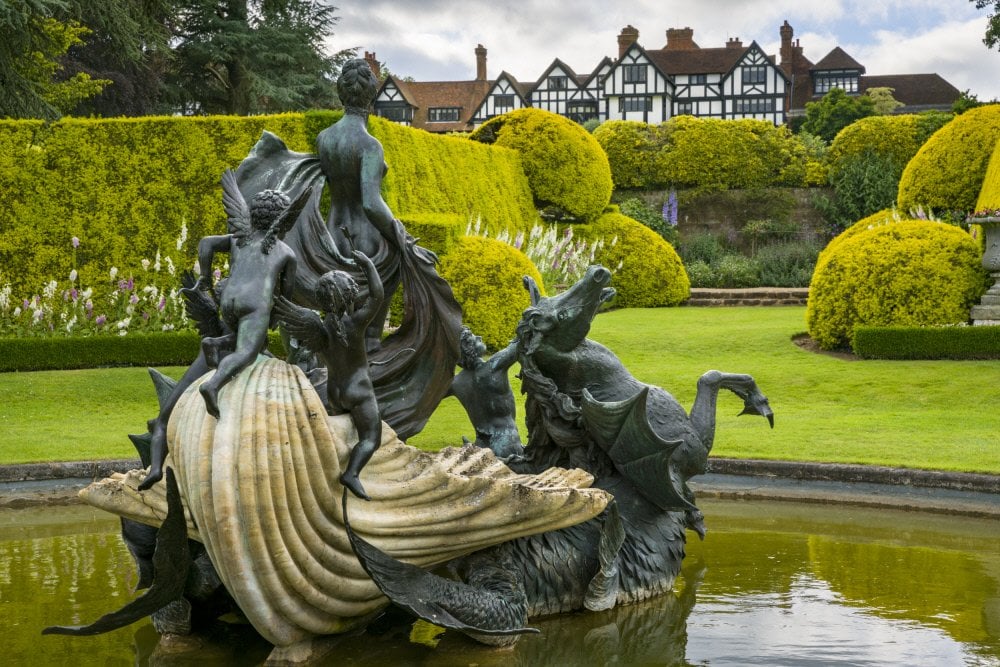
The Venus Fountain and house at Ascott, Buckinghamshire ©National Trust Images/Andrew Butler
https://www.nationaltrust.org.uk/ascott
Mottisfont
Mottisfont is a romantic house and gallery set in beautiful riverside gardens. Ancient trees, babbling brooks and rolling lawns frame Mottisfont's 18th-century house with a medieval priory at its heart.
Outside, carpets of spring bulbs, a walled rose garden, rich autumn leaves and a colourful winter garden create a feast for the senses all year round. Winding paths meander through stately trees, with the sound of water never far away. The world-famous collection of old-fashioned roses contained in one of the two walled gardens flower here once a year in June. There are hundreds of varieties and species of roses: scrambling, rambling, climbing and standard. Most years the garden is open late on certain evenings to enjoy the heady perfume at dusk. The newly-created Kitchen Garden is beginning to flourish with all sorts of produce.
From the walled gardens, a walk across the field brings you to the river Test and an easy stroll back to the car park. There are some entertaining water pumps and channels designed for the younger visitor to dabble in and if the flies are out you will be treated to the spectacle of large trout leaping from the river to catch their prey.
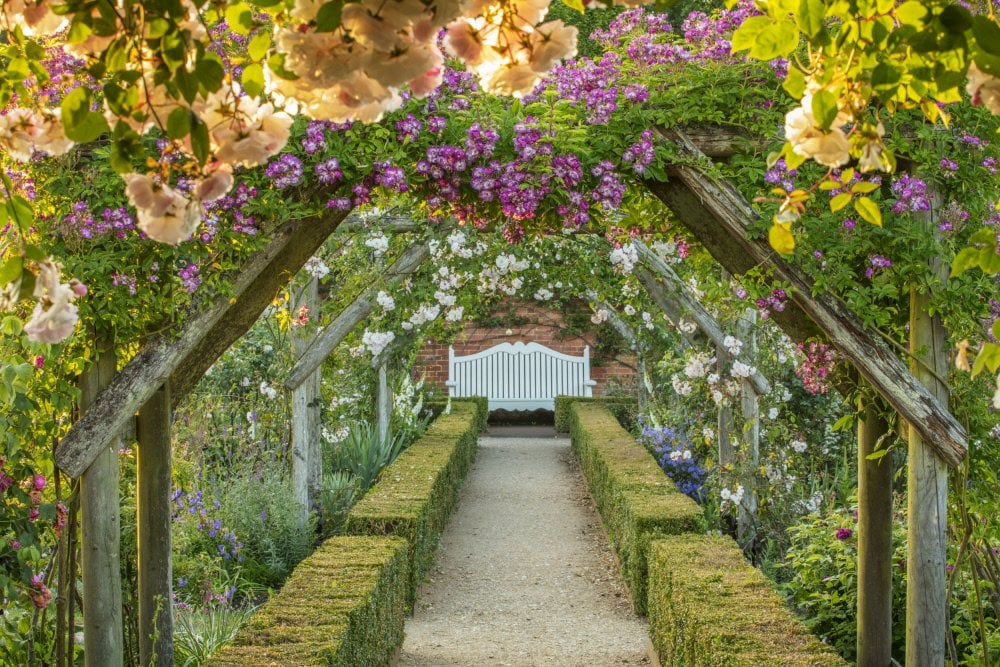
The Rose Garden in June at Mottisfont, Hampshire. ©National Trust Images/Clive Nichols
https://www.nationaltrust.org.uk/mottisfont
Witley Court and Gardens
Witley Court and Gardens you can wander through the intricately designed parterres, vibrant flower beds, ornate terraces and pavilions which make up the magnificently landscaped gardens. Garden lovers can enjoy the beautifully restored East Parterre garden complete with topiary and colourful planting. There is something to enjoy in the garden in every season. Not to be missed is the spectacular Perseus and Andromeda fountain – one of Europe’s greatest fountains. It dramatically depicts the legendary Greek hero Perseus swooping down on his winged horse Pegasus to rescue Andromeda who has been chained to a rock as a sacrifice to a sea monster. Its central jet reaches a height of up to 30 metres, complemented by nearly 30 more jets hidden among shells, sea nymphs and dolphins. Fully restored to working order, between April and October it fires on the hour from 11 am until an hour before closing – a sight and sound not to be missed. You can then make your way up to the mansion through Witley Court’s paradise of wild gardens, with their winding paths, rustic bridges, surprise lake vistas, trees and flowering shrubs from all over the world.
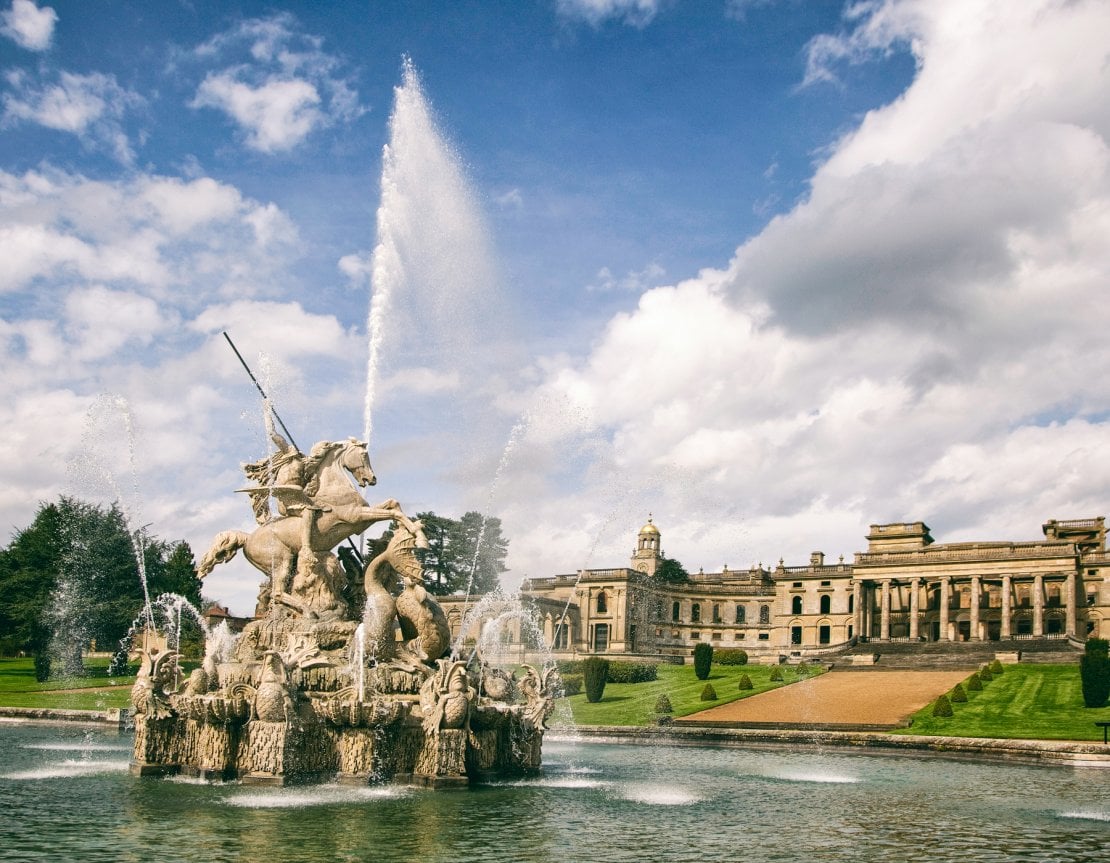
Witley Court Fountain ©English Heritage
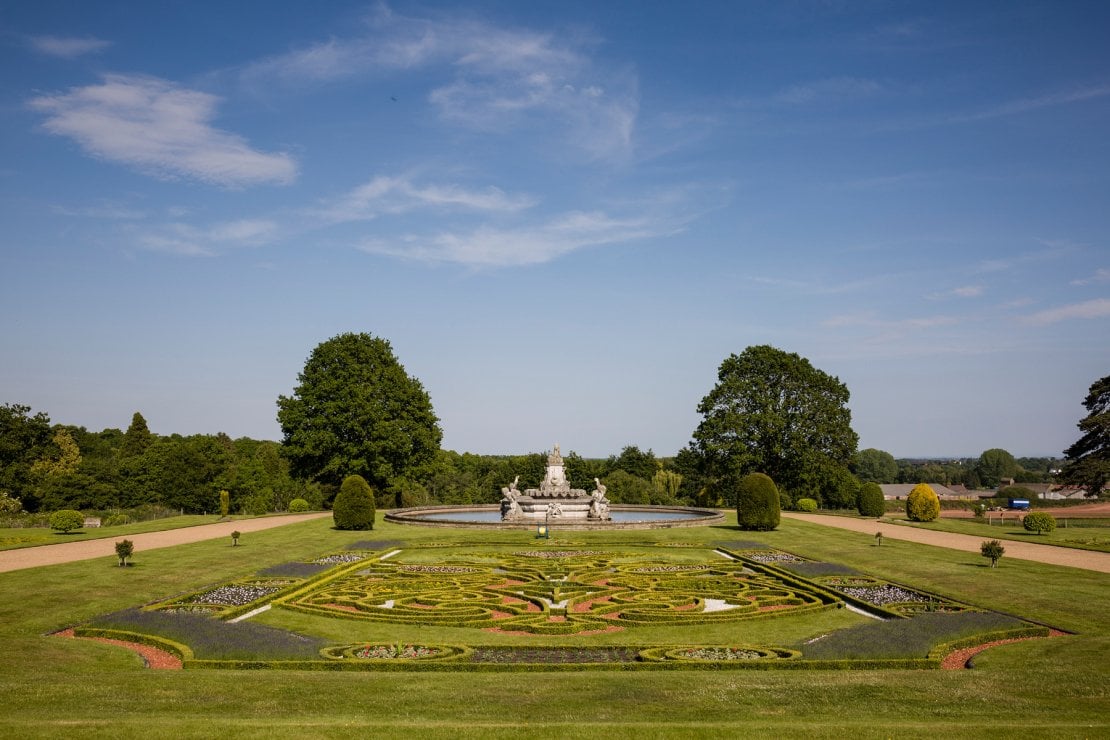
Witley Court and Gardens Parterre ©English Heritage
https://www.english-heritage.org.uk/visit/places/witley-court-and-gardens/history/
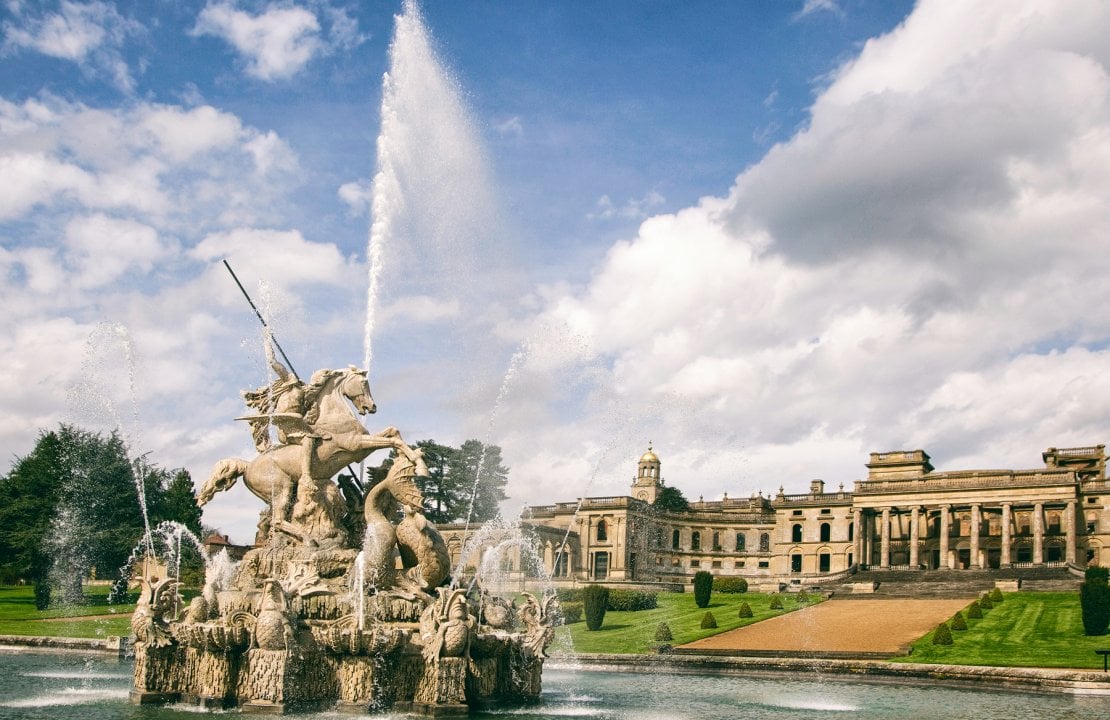
Posted by william - Mar 03, 2020 - 06:24
Thanks for informative sharing,